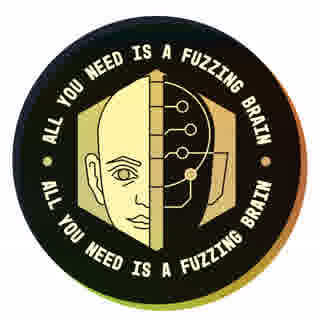🎯 Filling a Critical Gap
While the world has been buzzing about LLMs' coding abilities, a crucial question remained unanswered: How do these models perform on cybersecurity tasks? Traditional benchmarks like HumanEval or MBPP focus on general programming, but vulnerability detection and patch generation require specialized skills that aren't captured by existing evaluations.
That's why we created the FuzzingBrain Leaderboard - the first systematic benchmark for evaluating LLMs on real-world cybersecurity challenges.
Visit the Live Leaderboard
Check out real-time rankings and explore detailed performance metrics at:
o2lab.github.io/FuzzingBrain-Leaderboard →🌟 What Makes Our Leaderboard Different
Security-First Focus
Unlike general coding benchmarks, our evaluation specifically targets vulnerability detection and patch generation - the core skills needed for AI-powered cybersecurity.
Real Competition Data
Built on ~40 challenges from DARPA's AIxCC competition, featuring actual vulnerabilities in production software like curl, dropbear, and sqlite3.
Balanced Scoring
Uses AIxCC's proven scoring system: POVs worth 2 points, patches worth 6 points, reflecting the higher difficulty and value of generating working fixes.
Multi-Dimensional Analysis
Compare models across programming languages (C/C++, Java), challenge types (Delta-Scan, Full-Scan), and specific vulnerability categories.
Reproducible & Fair
Standardized execution environment with precomputed static analysis, 1-hour time limits, and consistent infrastructure for fair comparison.
Open & Transparent
Fully open-source evaluation framework with detailed methodology, allowing the community to understand and improve the benchmark.
⚙️ How the Benchmark Works
Challenge Selection
We curated ~40 high-quality challenges from DARPA AIxCC's three exhibition rounds, covering diverse vulnerability types and codebases.
Single-Model Evaluation
Each model runs in isolation on a single VM, ensuring fair comparison without the complexity of our multi-model production system.
Standardized Environment
Precomputed static analysis results and consistent infrastructure eliminate environmental variables that could skew results.
Time-Limited Execution
Each challenge has a 1-hour time limit for both POV generation and patching, simulating real-world time constraints.
Comprehensive Scoring
Final scores calculated using AIxCC formula: Total = POVs × 2 + Patches × 6, with models ranked by total performance.
🔧 Adaptations for Fair Benchmarking
To make our competition system work as a fair benchmark, we made several key modifications:
Single-VM Execution
Simplified from our massively parallel competition setup to run on a single machine with the vulnerability-triggering fuzzer provided as input.
Precomputed Analysis
Static analysis results (function metadata, reachability, call paths) are precomputed and stored in JSON format to eliminate performance variations.
Consistent Time Limits
Standardized 1-hour evaluation window per challenge, ensuring all models get equal opportunity to demonstrate their capabilities.
Focused Evaluation
Removed competition-specific optimizations like resource allocation and parallel strategy execution to focus purely on model capability.
📈 Early Findings & Insights
🏅 Model Performance Gaps
We're seeing significant performance differences between models on security tasks, with some excelling at POV generation while others perform better at patching.
💻 Language Specialization
Certain models show clear preferences for specific programming languages, mirroring training data distributions and architectural choices.
🎯 Task-Specific Strengths
The 2:6 POV-to-patch scoring ratio reveals interesting trade-offs - some models generate many POVs but struggle with patch quality.
📊 Benchmark Validity
Results correlate well with our competition experience, validating that the benchmark captures real-world cybersecurity capabilities.
🎮 Interactive Leaderboard Features
📊 Multiple View Modes
- Overall Ranking: Complete performance across all challenges
- By Language: Filter results for C/C++ or Java-specific performance
- By Challenge Type: Compare delta-scan vs. full-scan capabilities
🏆 Dynamic Rankings
- Real-time score calculations with emoji indicators (🏆🥈🥉)
- Expandable details showing POVs and patches found
- Hover effects and smooth animations
📱 Responsive Design
- Works seamlessly across desktop, tablet, and mobile
- Clean, professional interface with red/white theme
- Fast loading with efficient data handling
💡 Try It Yourself!
Visit the leaderboard and experiment with different view modes to see how various models perform across different dimensions of cybersecurity capability.
🌍 Community Impact & Future
Why This Matters
The FuzzingBrain Leaderboard addresses a critical gap in AI evaluation. As organizations increasingly explore AI for cybersecurity, they need reliable metrics to choose the right models for their specific needs.
Research Acceleration
Standardized evaluation enables researchers to compare approaches and identify areas for improvement in AI security capabilities.
Industry Adoption
Organizations can use benchmark results to make informed decisions about deploying AI for vulnerability detection and patch generation.
Educational Value
The benchmark serves as a learning resource for understanding the current state and limitations of AI in cybersecurity.
🏗️ Technical Implementation
Frontend Architecture
// Dynamic ranking with CSV data loading
async function loadLeaderboardData() {
const response = await fetch('data/scores.csv');
const csvData = await response.text();
return parseCSV(csvData);
}
// Flexible ranking system
function calculateRanking(data, filters = {}) {
return data
.filter(item => matchesFilters(item, filters))
.sort((a, b) => (b.povs * 2 + b.patches * 6) -
(a.povs * 2 + a.patches * 6));
}Scoring Formula
Total Score = (POVs Found × 2) + (Patches Generated × 6)
This scoring system reflects the relative difficulty and value of each task type, with patches weighted 3x higher than POVs due to their complexity and practical impact.
🤝 Get Involved
The FuzzingBrain Leaderboard is an open, community-driven project. Here's how you can contribute:
🔮 What's Next
📈 Expanded Challenge Set
Adding more diverse vulnerabilities and programming languages to create an even more comprehensive evaluation.
🔄 Regular Updates
Monthly evaluation runs with the latest model releases to keep the leaderboard current and relevant.
📊 Advanced Analytics
Deeper analysis of model performance patterns, error analysis, and detailed capability breakdowns.
🌐 Community Features
Enhanced collaboration tools, discussion forums, and community-contributed challenges.
🚀 Explore the Leaderboard
Ready to see how different AI models stack up on cybersecurity challenges?
Join the community advancing AI-powered cybersecurity through transparent, rigorous evaluation.
